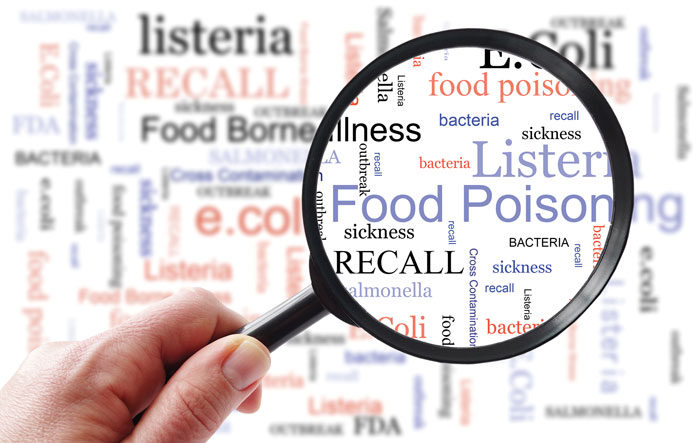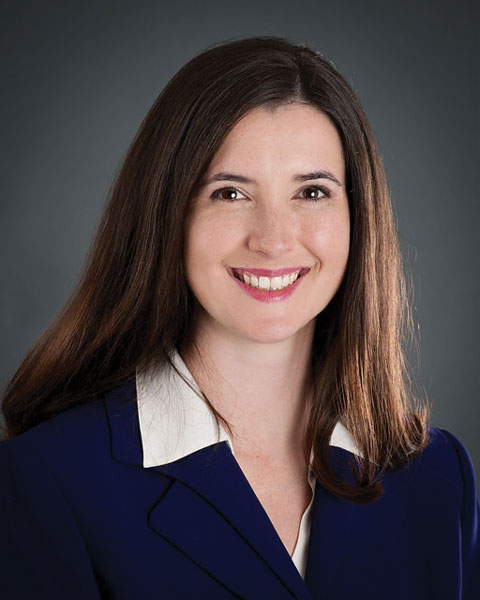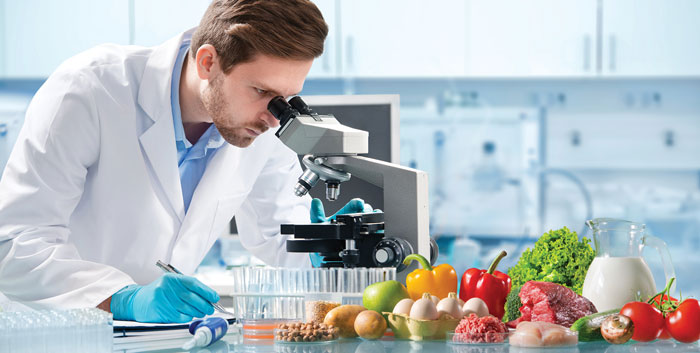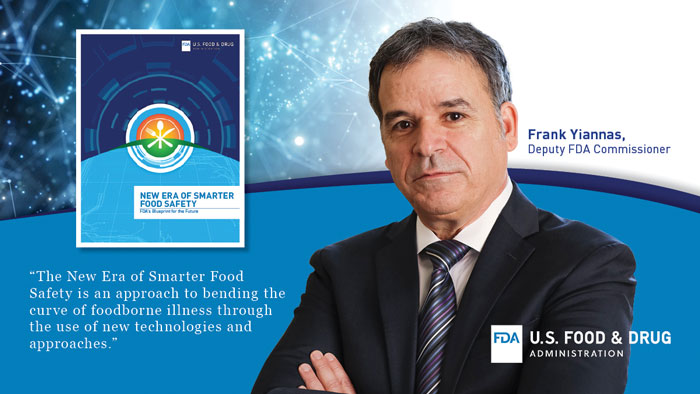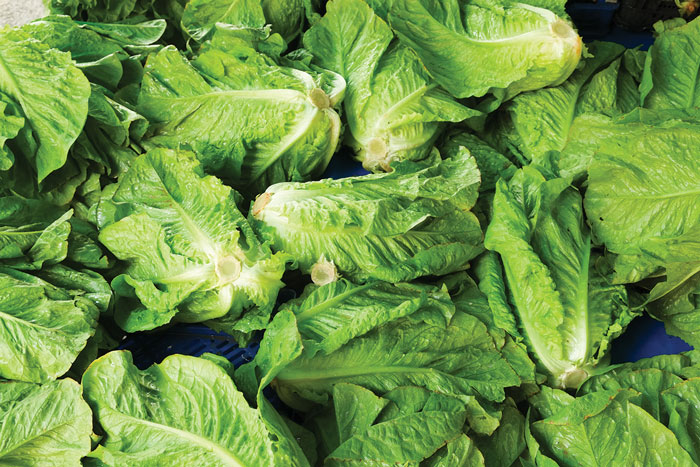
Food Safety Gets Smarter
New technologies, policies, and partnerships are making the U.S. food supply safer.
Article Content
Arsenic and toxic metals were found in baby food, including organic brands, a subcommittee of the U.S. Congress reported in February. Romaine lettuce poisoning in California affected 167 people and hospitalized 85 in the fall of 2019. Systemically tainted food sickened more than 1,100 Americans from 2015 through 2018, resulted in a record $25 million federal fine, and almost brought down Chipotle, one of the iconic successes of the U.S. fast-casual foodservice segment.
And there have been many more incidents in a funereal drumbeat of food poisoning debacles that goes back decades. Despite a highly advanced supply chain in the United States and a global food industry that has been centuries in the making, inadequate food safety remains a huge problem that seems to defy ever-improving technology, industry determination, regulatory oversight and even growing political will. Meanwhile, new consumption patterns, including the growing popularity of leafy greens, fresh-cut fruit, and less-than-perfect produce, have arisen to complicate the issue in the United States.
The fact that the technology and systems for detecting foodborne illnesses have gotten increasingly sophisticated—and thereby have uncovered cases that would have gone undiagnosed before—underscores the dimensions of this stubborn plague, without necessarily suggesting solutions. Meanwhile, improvements in detection have created misperceptions that obscure how much safer the system actually has become overall.
Still, every year 48 million people in the United States get sick, 128,000 are hospitalized, and 3,000 die from foodborne disease, according to the federal Centers for Disease Control (CDC). Worldwide, this continued scourge involves about 600 million people—almost one in 10 of the human population—who fall ill after eating contaminated food each year, with 420,000 of them dying, according to the World Health Organization (WHO). Forty percent of the foodborne disease burden rests with children under five years of age, with 125,000 deaths each year, WHO says.
“Our ability to detect has outpaced our ability to prevent or control” safety incidents, says Jennifer McEntire, vice president of food safety for the United Fresh Produce Association. “There have been illnesses all along, but maybe not on our radar. Now that we know, and have the scientific tools to see there are outbreaks, we have a responsibility to do something about it.”
Besides the lack of enough objective progress, another problem, partially stemming from it, is a trust gap. While 37% of industry decision-makers placed complete trust in companies and brands to ensure food safety in a recent survey of 462 industry executives conducted by Zebra Technologies, only an average of 20% of consumers placed complete trust in companies and brands to ensure food safety in Zebra’s simultaneous survey of nearly 5,000 consumers worldwide. And while 69% of industry decision-makers said the industry can manage food traceability and transparency, only 35% of consumers agreed.
Problem-Solving Strategies
Partial solutions that are making foods and beverages safer for human consumption include rapid advances in digital traceability of products, public-private partnerships (see sidebar on page 40) and a new, overarching blueprint for tackling food safety developed by the U.S. Food and Drug Administration (FDA).
That blueprint, the New Era of Smarter Food Safety, is rolling out now. Over the next decade, it calls for achieving goals in tech-enabled traceability, use of predictive analytics and other smarter tools and approaches for prevention and outbreak response, new business models and retail modernization, contamination reduction, and the development of stronger food safety cultures.
“We envision a framework in which education, communication, and democratization of data will enable industry, public health advocates, and government to work in concert to keep the food supply safe,” says Frank Yiannas, FDA’s deputy commissioner for food policy response, a position he assumed in 2018 and in which he became a main architect of the New Era approach. This “outlines a partnership between government, industry, and public health advocates based on a commitment to create a more modern approach to food safety.
“There is an opportunity to drive the changes needed to create a digital and safer food system,” adds Yiannas, who brought a strong understanding of industry with him to the FDA after long stints in charge of food safety for Walt Disney and Walmart. “We have and will engage a broad expanse of stakeholders in industry, academia, trade associations, and consumer groups, as well as our state, federal, international, and other regulatory partners, and groups that we had not traditionally engaged with before, such as technology companies.”
Developing Digital Solutions
Technology companies have emerged in the last several years as an absolute key to overcoming food safety hurdles, especially in the arena of traceability in the event of outbreaks. Their ability to digitize every aspect of the food supply chain throughout the CPG and foodservice industries has become a timely enabler against a problem that remains stubborn.
“Digital tech is the next frontier for making significant progress,” says Francisco Diez-Gonzalez, director of the Center for Food Safety at the University of Georgia. “We need to use big data to tackle future outbreaks and prevent them. Using traditional methods won’t do it; we need to have the ability to connect different large sets of data, analyze it, and identify trends to be able to make progress.”
“Food and beverage companies have lagged on traceability,” contends Doug Lawson, chief executive officer of ThinkIQ, a supply chain software company. Food industry executives have gotten hung up on trying to apply traceability methods from the pharmaceutical industry to the very different food business, he says.
Mark Wheeler, director of supply chain solutions for Zebra, which provides temperature sensors and other devices, believes “part of the problem is we still have lots of progress to be made on tracking and tracing materials at a more granular and detailed level, so that when an outbreak does occur, we can take advantage of a more surgical approach instead of the brute force approach to a recall that has made the extent of it hard to ascertain. That’s what the industry and the FDA are trying to address with new traceability standards.”
Food companies can, for instance, more effectively employ the vast data they generate and better utilize huge networks of sensors that typically already exist throughout their supply chains, Lawson says. That’s how ThinkIQ helped General Mills thwart a traceability challenge for Cheerios. In 2015, as the company was creating gluten-free forms of some of its Cheerios oat cereals, General Mills had to recall about 1.8 million boxes after wheat flour was inadvertently introduced into the gluten-free oat flour system at its plant in Lodi, Calif. It was a human error—but eminently avoidable, Lawson says.
“General Mills,” which Lawson declined to identify specifically as a client, “already had 98% of the data they needed to achieve traceability at a scale that would have helped them avoid this problem,” he says. “And the vast majority of the sensors they needed, about 750,000, already existed. They just needed to use them differently to create traceability.”
ThinkIQ began about three years ago to help the company trace every movement of its oats throughout its grain network of about 3,800 silos across North America, as well as its mills. Doing so prevented four recalls subsequent to the 2015 incident, Lawson says, and in another episode helped quickly identify recalled products long before they reached the distribution system. “We were able to do much more surgical and incisive callbacks,” he says, with a system that also produces great “side effects of traceability,” such as more efficient utilization of oat supplies overall.
How Blockchain Is Helping
Blockchain technology, meanwhile, is emerging as a huge potential part of the food safety puzzle. The technology, of course, stores data in blocks that are chained together on a decentralized and yet immutable basis, which is promising for creating and preserving traceability in supply chains that can be as long and complicated as those for food. Over the last few years, IBM has made widespread a blockchain it calls Food Trust, aimed at boosting food safety by providing what the digital giant calls “the only network of its kind to connect participants across the food supply through a permissioned, permanent, and shared record of food system data.”
So, for example, supermarket giant Albertsons joined Food Trust in 2019 to help overcome the obstacles that existed in traceability for products such as romaine lettuce. The chain of 2,300 stores began by tracing bulk lettuce from one of its distribution centers and explored expanding the experiment to other food categories throughout its distribution network.
Raw Seafoods, a New England fishery, began having suppliers upload information about their catches with Food Trust. The extra accountability helped the company address a handful of problems, including what’s known as “fear of fish.” As many as 90% of all Americans don’t eat the recommended allotment of seafood because of fears about its provenance and safety.
Digital supply chain platform provider Logility is working on a blockchain solution for food companies to boost their abilities to forward-trace products that must be recalled, investigate backward where the problem developed in the supply chain, and identify alternatives for meeting demand.
“Everyone in the supply chain participating together in blockchain is a year or two away,” says Mark Burstein, president and chief executive officer of Logility and of New Generation Computing. “Food safety problems will be caught long before they ever make it to the market. These goods move so quickly that two days can make the difference in capturing them before they leave the facility or having them make it to market.”
At this point, the United States trails much of the world, including China, in implementing blockchain, even in agriculture, says David Furlonger, a Gartner analyst and co-author of a new book on blockchain. “You don’t hear about it as much as you do in other markets yet,” he says. “And there’s still mostly usage of blockchain in areas of the market that aren’t too complicated. Once we get to tracing a blueberry from one bush to a particular box of berries to one grocery store, it gets moderately complicated compared with other use cases.”
Papayas, Perceptions, and Partnerships
Some single out imported foods as particularly problematic—papayas, for instance. Beginning in 2011, there was a pattern of eight outbreaks of salmonella infections in papayas, which are imported to the United States from Mexico, Belize, Guatemala, Brazil, the Dominican Republic, and other countries. These outbreaks accounted for a total of almost 500 reported cases of illness, more than 100 hospitalizations, and two deaths, according to the FDA.
“We knew we could do better,” Yiannas says. He sent a letter in August 2019, to all sectors of the papaya industry with a request for them to break the pattern of outbreaks. “Since that call to action, our regulatory partners in Mexico, the largest supplier of papayas to U.S. consumers, and the produce industry and others have really stepped up to do important work to develop food safety best practices for the papaya industry to follow.”
As a result, Yiannas says, the United States in 2020 “did not experience a major outbreak of salmonella in papaya. That’s partnership at work. And I call that the anonymity of prevention. No headline, but I don’t think that happens by chance.”
Perceptions also play a role, especially the irony that, the better the industry and regulators get at detecting incidents of foodborne pathogens, the more the problem is perceived to increase when the improved detection is making actual ongoing improvement in the safety of foodstuffs.
“In the past, when people didn’t pay attention to it or we didn’t have the means to detect pathogens in food products, we didn’t know what was the cause,” says Jianghong Meng, director of the Joint Institute for Food Safety & Applied Nutrition at the University of Maryland. “But with the advancement of technology, we’re much better at detecting illness caused by food. We have much better systems for food safety surveillance. Health organizations and government agencies can pinpoint exactly what happened.”
When there’s an outbreak, Wheeler adds, “it’s very visible to the consumer. But 99.9% of the time, when something goes right, it’s not noticed. It’s like being on an elevator.”
Greater cooperation across stakeholders is going to be required to get to the point where no American will get “stuck on an elevator” with a foodborne illness. Company leaders generally recognize the urgency of this and are pushing for greater partnership with government regulators and not-for-profits at the same time that the food and beverage industry resists efforts to increase regulation in other areas.
Leveraging his background in the industry, Yiannas has been recruiting business support for a New Era blueprint that strives for partnership in every area. These include developing traceability standards, creating incentives for companies to voluntarily adopt tracing technologies, sharing research and development, mining data, and enhancing outbreak responses across public-private lines. Yiannas also wants these partnerships to extend to holding forums for all stakeholders, co-creating consumer messaging, and possibly establishing voluntary programs in which factories and farms would accept auditing for third-party standards in exchange for incentives such as fewer and less extensive government inspections.
Yet the short history of one partnership effort, the GenomeTrakr network, illustrates some of the challenges of counting on increased public-private cooperation. Sponsored by the FDA and the CDC, it’s the first distributed network of laboratories to use whole-genome sequencing for pathogen identification.
“It’s a big deal because it is technology that can be used to really understand how to track down the origins of contamination, and in a very sophisticated way,” Meng says. The government wants to partner with industry to gather the data on food origins that would make GenomeTrakr as comprehensive as possible and open to the public, and has conducted workshops and conferences to recruit companies.
“But the industry has concerns,” he says. Companies want to keep competitors out of proprietary data, for one thing. “And if a company’s information is in the system and there’s an outbreak somewhere, then it could be linked to a [bacteria] strain that’s found in your plant. So what are you going to do? Maybe there’s no epidemiological link, and you can say you’re not the cause of this outbreak. But how are you going to explain it? That’s an issue for the industry.”
Cooperation during COVID is a good precursor for success for the New Era program, Yiannas says. “I have been struck [during the pandemic] by the strength of relationships between FDA, our federal partners, [and] the food industry,” he says. “Our partners have stepped up in a big way during this crisis. The collaboration between government and industry especially has increased by many magnitudes. This bodes well for the New Era, which will rely on an even closer cooperation between the FDA and stakeholders in the public and private sectors.”
Mitzi Baum, head of an activist group formed after an outbreak of E. coli poisonings in beef patties at Jack in the Box restaurants in the Northwest killed four children and infected 732 people, agrees.
“The road map is a great place to start, a great way to move forward,” says the head of Stop Foodborne Illness. “But it can’t just be the FDA driving it. There need to be industry and consumer groups as well. We’re all in this together. We need to put time and effort into producing solutions.”


